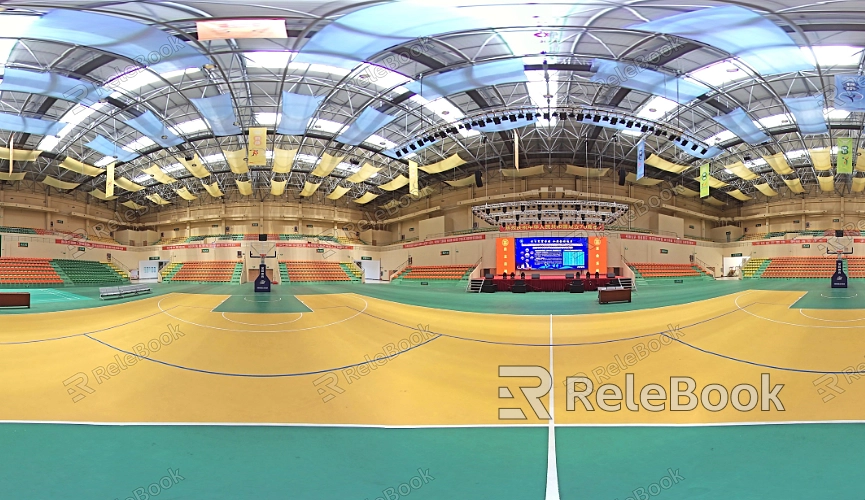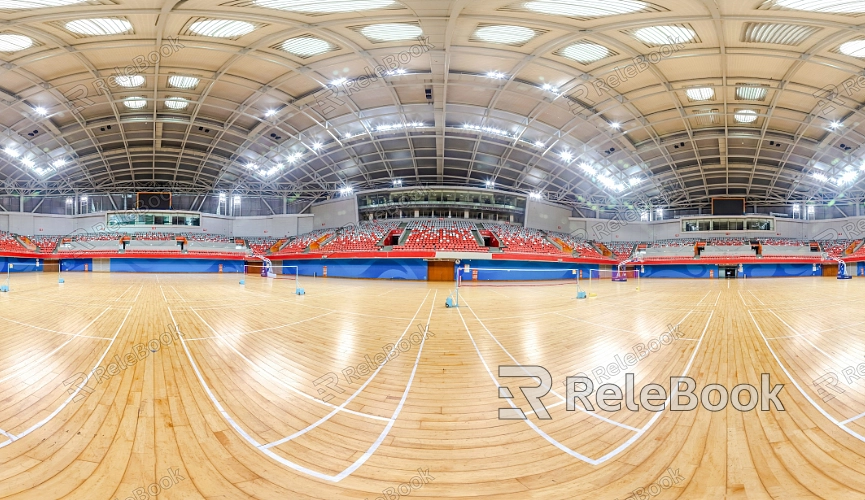How Can I Use Stadium Light HDR Texture in 3D Modeling?
When creating dynamic scenes, particularly those depicting sports events or large gatherings, the use of stadium light HDR textures becomes essential. These textures not only provide realistic lighting effects but also enhance the overall atmosphere of the model. Let's explore how to effectively utilize stadium light HDR textures to elevate your 3D modeling.

1.Understanding the Basics of HDR Textures
HDR (High Dynamic Range) textures capture and display a broader range of brightness. This allows for more detail in the light sources during rendering, preserving highlights and shadows. By grasping the characteristics of HDR textures, designers can better apply them to create scenes with depth and realism.
2.Importing HDR Textures into Software
When using software like Blender or 3ds Max, the first step is to import the stadium light HDR texture into your project. Typically, designers can select the appropriate options in the material editor to load the HDR file into an environment light source or material sphere. Make sure to choose the right settings upon import to maximize the texture's effectiveness.
3.Adjusting Lighting Settings
After importing the HDR texture, adjusting the lighting settings is crucial. Designers can optimize the effect by changing the intensity, angle, and color. For instance, modifying the light intensity based on scene requirements can simulate different times of day, significantly enhancing the model's realism.
4.Utilizing Ambient Lighting
Stadium light HDR textures can serve as both a primary light source and an ambient lighting aid. This means that even areas without direct light will have some brightness, which is particularly effective in rendering complex scenes. This approach adds depth and detail to the overall environment.
5.Combining with Other Materials and Textures
To achieve richer visual effects, designers can combine stadium light HDR textures with other materials and textures. For example, using various ground materials (like grass or track surfaces) alongside HDR textures can better represent the authentic environment of a sports venue. Mixing different materials can create a more vibrant outcome.

6.Final Checks Before Rendering
Once all settings are complete, conducting a final check is essential. Designers should carefully review the interactions between all light sources and textures in the scene to ensure no details are overlooked. Additionally, utilizing real-time rendering previews can help identify issues that need adjustment.
7.Optimizing Rendering Settings
Appropriate rendering settings are crucial for output quality. Ensure that high resolution and suitable anti-aliasing settings are used for a clear image. Depending on project needs, selecting the right rendering engine—such as Cycles or V-Ray—can enhance the rendering results.
8.Feedback and Iteration
After rendering is complete, collecting feedback is vital. Sharing the work with team members or clients and listening to their insights can lead to improvements. Adjustments based on feedback and continuous iteration can make the final product more aligned with requirements.
9.Learning and Sharing
Gaining experience through the use of stadium light HDR textures is key. Engaging in online communities or forums to share practical experiences and interact with other designers can inspire new ideas and techniques. This not only boosts individual skills but also contributes to the progress of the entire design community.
10.Resources and Tools
Finally, don’t overlook the wealth of online resources and tools available. Many websites offer free or paid HDR texture resources. For instance, you can check out Relebook at https://textures.relebook.com/ to find textures that suit your projects. Learning how to use these tools effectively can significantly enhance your workflow.
By discussing these points, we’ve uncovered how to effectively use stadium light HDR textures in 3D modeling. These techniques not only improve visual outcomes but also provide designers with greater creative flexibility. If you're looking for high-quality HDR image resources, 3D textures, SketchUp models, or 3ds Max models to create stunning virtual scenes, Relebook offers a vast selection to help you achieve outstanding visual results in your projects.

